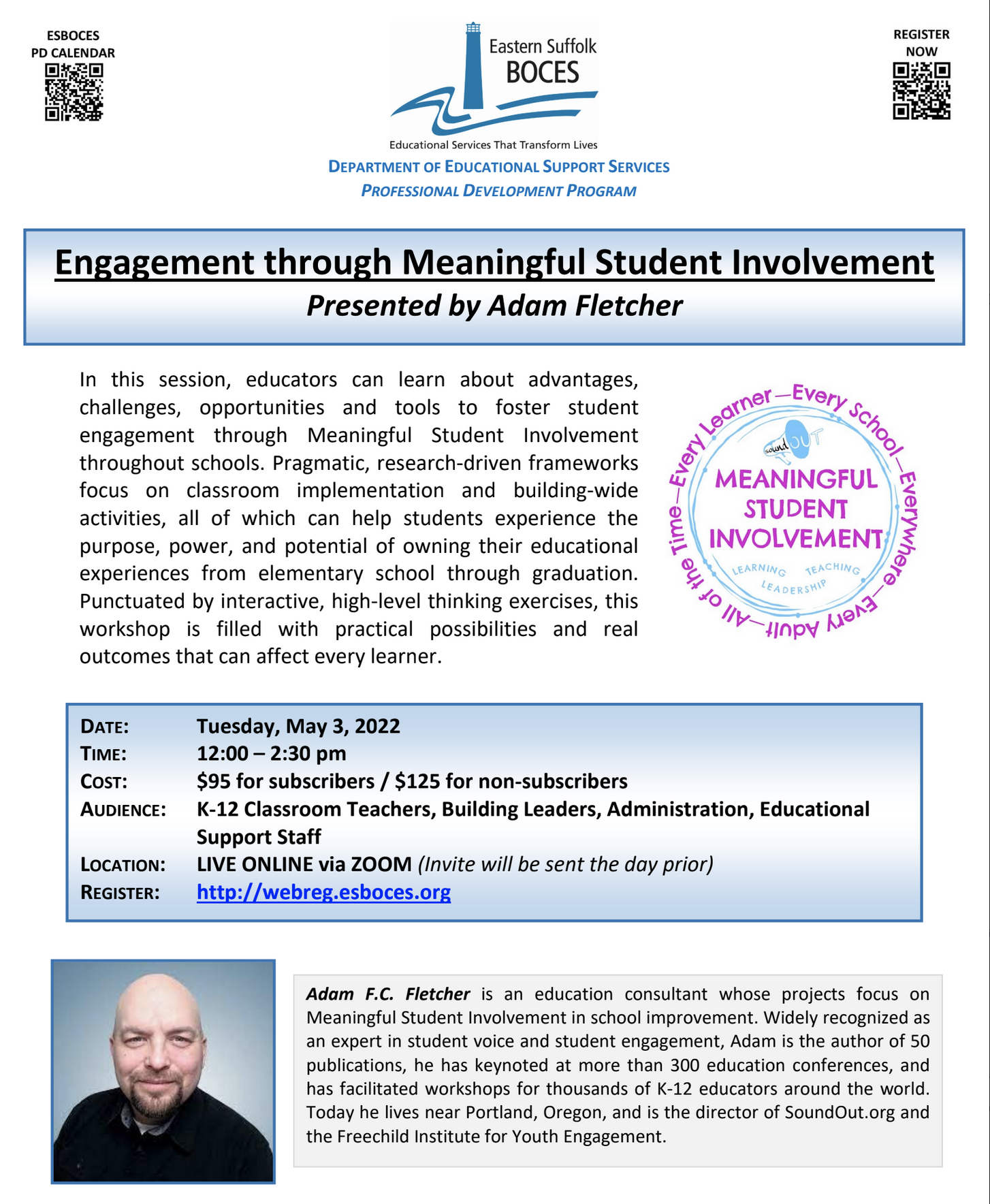“The SoundOut fan club keeps growing! Thanks so much for talking with us about student voice. There are so many specific cries for help in implementing student voice, and I want our programs to reach out to you for more extensive training at their sites. Schools need YOU!”
—Rudi Bertschi, 21st Century Community Learning Centers, Washington State Office of Superintendent of Public Instruction.
Are you a K-12 school, education agency, or nonprofit seeking to build stronger, broader, and deeper alliances to promote student voice, student engagement, Meaningful Student Involvement and student/adult partnerships?
Are you a education reform organization seeking to strengthen the relationships, alignment, and power of students and adults to work together?
If so, SoundOut can share tools, lessons learned, and approaches that help education and organizations find a strategic and valued role in building powerful and transformative movements for students to improve schools.
Since 2002, we have partnered with more than 300 K-12 schools, dozens of districts, and more than 20 education agencies across the United States and Canada to infuse Meaningful Student Involvement in school transformation. We have written dozens of publications, been published internationally, spoke and facilitated at hundreds of events, and been cited more than 1,000 times for our contributions to this movement.
Related Content




